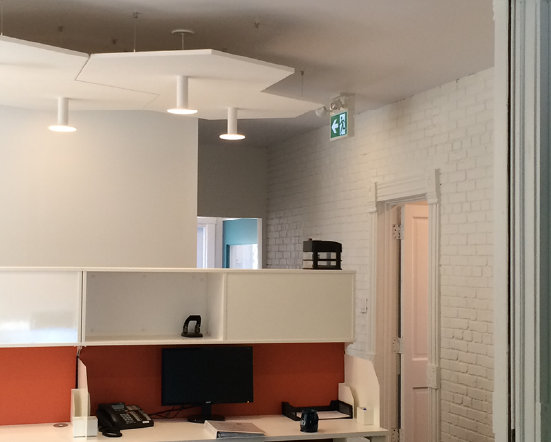Proper office lighting is essential for enhancing productivity and employee well-being. By investing in the right lighting solutions, businesses can create a more comfortable and effective work environment.
Enhancing Employee Productivity
Good lighting significantly boosts productivity.
Studies have shown that well-lit environments improve focus and efficiency among employees. Adequate lighting reduces eye strain, which can lead to fewer headaches and a greater ability to concentrate on tasks. Moreover, natural light has been associated with better moods and higher energy levels, further contributing to a productive workforce. When employees can see their work clearly and comfortably, they are more likely to produce quality results. Therefore, investing in proper lighting is a strategic move to enhance overall productivity.
Improving Employee Health and Well-Being
Proper lighting contributes to better health outcomes for employees.
Exposure to natural light helps regulate circadian rhythms, which can enhance sleep quality and overall well-being. Additionally, poor lighting conditions can lead to discomfort, fatigue, and mental exhaustion. By providing a well-lit workspace, employers can help reduce the incidence of work-related health issues. Furthermore, creating a positive work environment through effective lighting can lead to increased employee satisfaction and reduced turnover rates. Thus, health and well-being are key factors in making a compelling case for proper office lighting.
Enhancing Aesthetic Appeal
Good lighting enhances the visual appeal of office spaces.
A well-lit environment not only improves functionality but also creates a welcoming atmosphere. Adequate lighting highlights architectural features and facilitates better visibility of workplace aesthetics. It allows for the display of artwork and other decorative elements, enhancing the overall mood of the space. This appeal can positively influence clients and visitors, creating a favorable impression. Therefore, the investment in quality lighting also serves to elevate the brand image through visual appeal.
Supporting Collaboration and Communication
Effective lighting fosters collaboration and communication among employees.
Open office layouts that utilize proper lighting can facilitate easier conversations and collaborative efforts. When spaces are well-lit, employees feel more comfortable engaging with one another, which can lead to the sharing of ideas and increased innovation. Good lighting can also delineate between different areas, aiding in the natural flow of communication. Consequently, creating an interactivity-friendly environment becomes easier with the right lighting design. This ultimately fosters a more dynamic workplace culture.
Accommodating Diverse Working Styles
Quality office lighting caters to diverse working styles.
Different employees have varying preferences and needs when it comes to lighting. Some may prefer bright, focused light for detailed tasks, while others might benefit from softer, ambient lighting. Implementing adjustable lighting solutions allows individuals to tailor their work environment to suit their specific tasks and comfort levels. Furthermore, flexibility in lighting can enhance the adaptability of workspaces to accommodate various roles and responsibilities. Thus, investment in proper lighting enables personalization in the workplace.
Reducing Energy Costs
Efficient lighting can lead to significant energy savings.
Upgrading to energy-efficient lighting solutions, such as LED bulbs, not only reduces energy consumption but also lowers electricity bills. Modern lighting systems can be equipped with sensors and timers that adjust brightness based on occupancy and natural light levels. This mindful approach to energy usage contributes to sustainability efforts while providing financial relief. Moreover, businesses can take advantage of potential tax incentives for implementing energy-efficient solutions. Therefore, investing in proper office lighting is not only environmentally responsible but economically beneficial.
Compliance with Legal Standards
Proper lighting is essential for meeting workplace safety regulations.
Occupational health and safety regulations mandate various lighting requirements to ensure employee safety and comfort. Insufficient lighting can lead to workplace accidents and can be seen as neglecting employee welfare. By investing in proper lighting, businesses can ensure compliance with these legal standards, mitigating the risk of penalties and fostering a culture of safety. Moreover, being proactive about workplace conditions reflects positively on a companys reputation and commitment to employee care. Thus, compliance is a critical aspect of investing in proper lighting.
In summary, investing in proper office lighting is a multifaceted strategy that yields numerous benefits, including enhanced productivity, improved health, and overall workplace satisfaction. As such, organizations should prioritize this investment to foster a thriving work environment.

